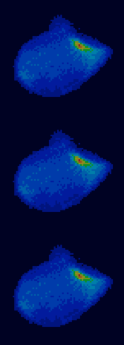Group research overview

The subcellular organisation as a mediator of signal tuning in T cell activation
Cells, in particular cells of the immune system, have to continuously adjust to changing physiological conditions. Flexibility in doing so is afforded by complex signalling systems of dozens of interacting proteins. T cells are the central regulatory cells of the adaptive arm of the immune system and critical cytolytic effectors in the immune responses to viruses and cancer. A single receptor, the T cell receptor, mediates immunological recognition. However, large families of costimulatory and coinhibitory receptors amplify or attenuate the T cell receptor signal to allow adaptation to changing physiological conditions. We are interested in understanding how T cell signalling is thus tuned in health and disease.
For unique access to signal tuning, we have historically studied T cell signalling as it occurs inside live cells in the form of spatiotemporal distributions of signalling intermediates in the physiological activation of primary T cells by antigen presenting cells: In T cell activation, as in the activation of most other cell types, ligand-engaged receptors and signalling intermediates are not evenly distributed throughout the cell, but enrich in distinct locations at distinct times. At the system scale such uneven signalling distributions govern the information flow through the signalling network. Our most recent contribution to this question investigates the distribution of inhibitory receptors (Lu et al., Cells, 12, 2558).
More recently we have applied imaging strategies to better understand mechanisms of the suppression of cytotoxic T cells with an emphasis on tumour-mediated immune suppression. We have shown that the ability of a cytotoxic T cell to maintain a stable cell couple with the tumour target cell, as driven by actin dynamics, is critical for efficient cytotoxic effector function and impaired in tumour infiltrating lymphocytes (Ambler et al., Sci. Signal., 13, eaau4518.) Cell couple maintenance and cytotoxic T cell function are regulated by the inhibitory receptor TIM-3 and the soluble mediator adenosine (Edmunds et al., Commun. Biol., 5, 9), (Alamir et al., Sci. Signal., 18, eadk4594.) To extend this cellular work into therapeutics, we have used three-dimensional tissue culture to generate suppressed human cytotoxic T cells with a phenotype that closely resembles that of exhausted T cells in the tumour microenvironment (Alsubaiti et al., Immunother. Adv., 5,Itaf023). In ongoing work, we use such cells to investigate how cancer-associated fibroblast, tumour-associated bacteria and synthetic T cell receptor engagers control the function of suppressed cytotoxic T cells.
